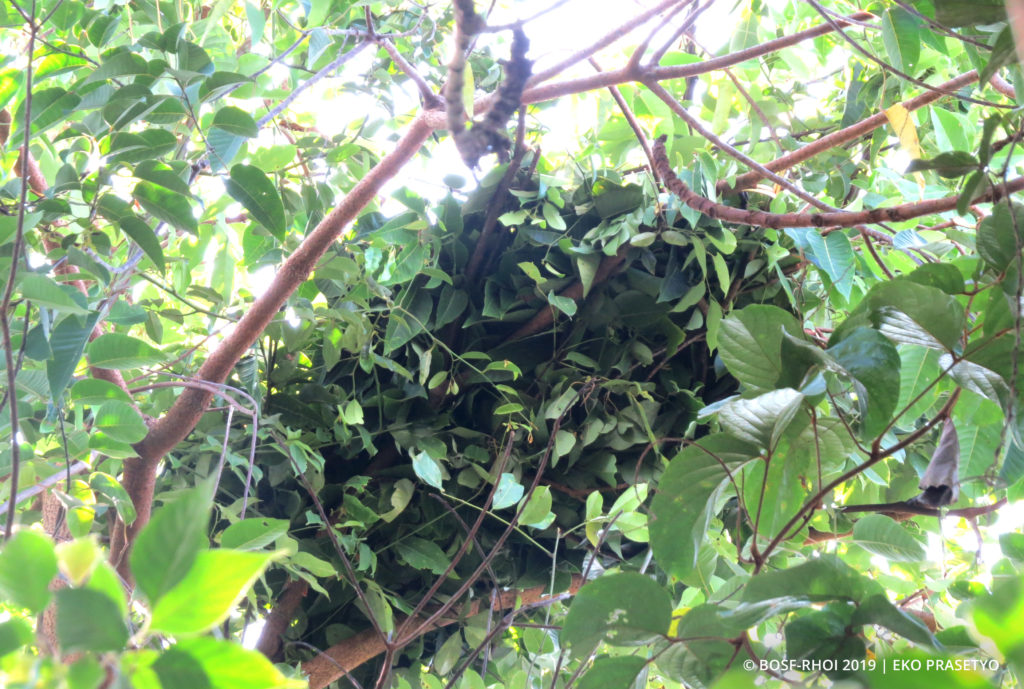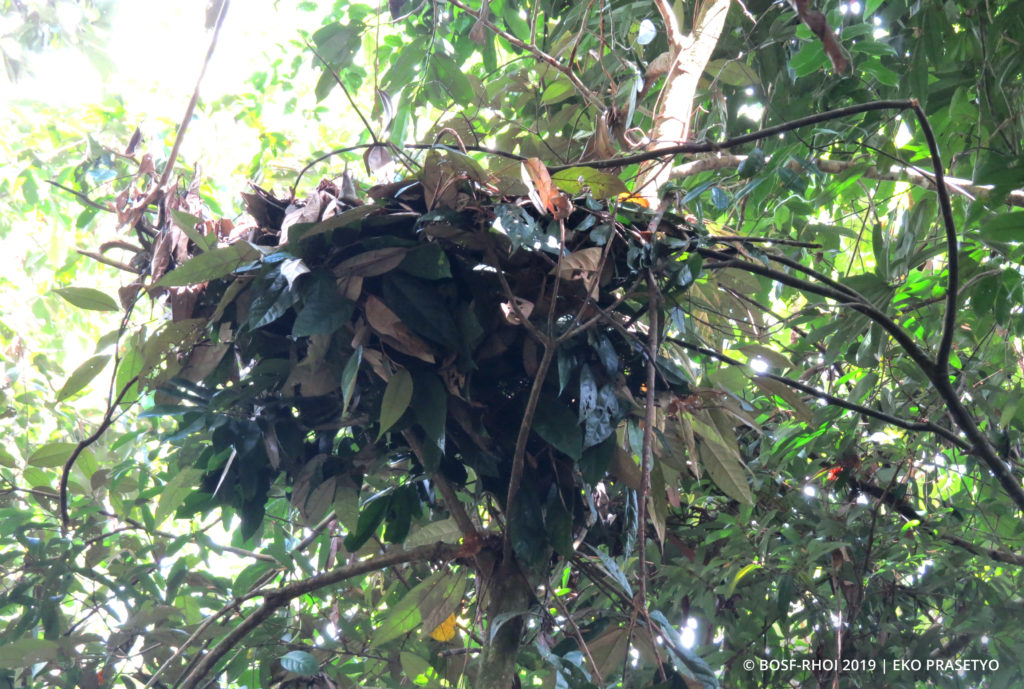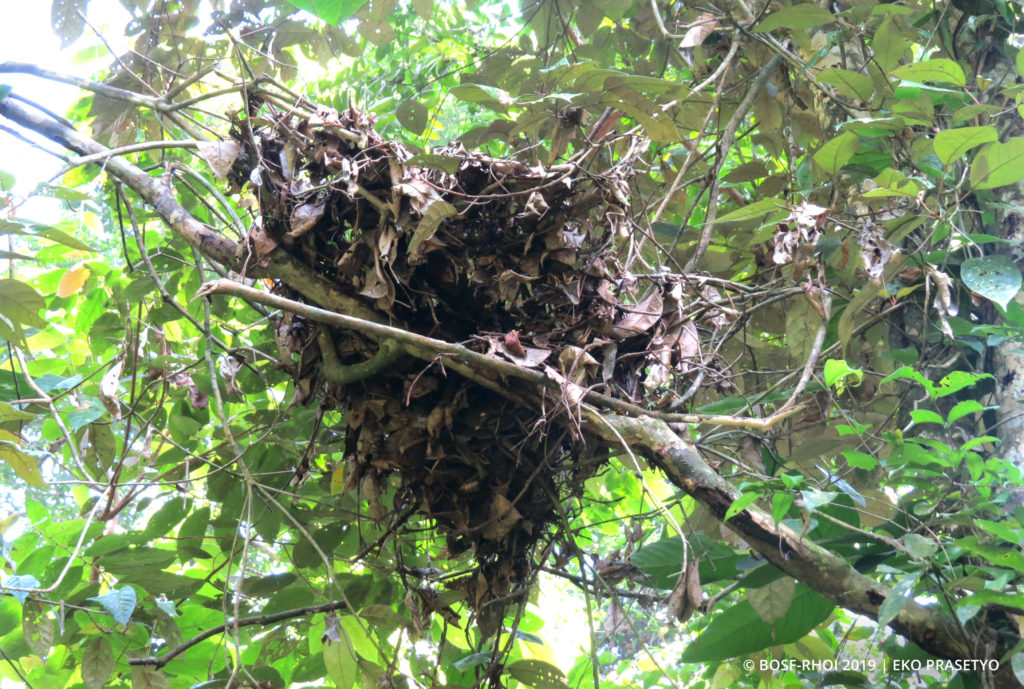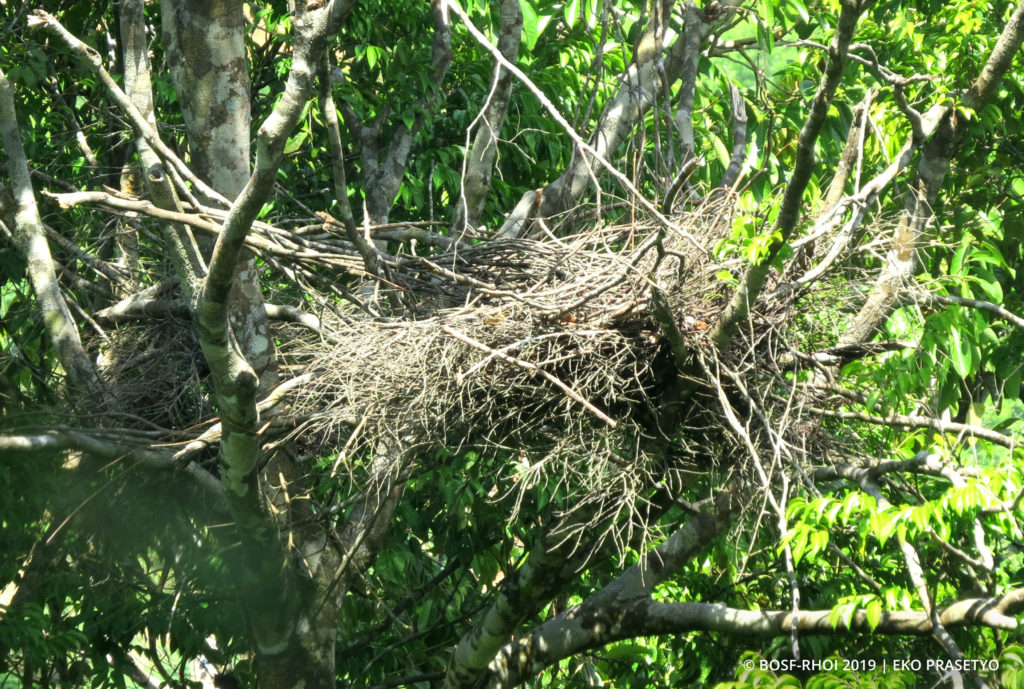BOS Orangutan Releases: Check Out These Nests!
Text by: PRM Team in Nles Mamse Camp, Kehje Sewen Forest.
December 17, 2019 — The orangutans we reintroduce to the wild are tracked by our Post-Release Monitoring (PRM) team and observed daily following their release. The purpose of this is to evaluate how released orangutans are adapting and developing in the forest. Our PRM team from Nles Mamse Camp in the Kehje Sewen Forest, East Kalimantan, regularly patrols in search of released orangutans and records their progress.
Tall trees and an abundance of natural food in lush forests provide the perfect environment for released orangutans, who extensively explore their new homes. While this is what we want for our released orangutans, it also creates a problem for us, as the monitoring team is forced to tirelessly comb vast forest areas to locate them.
Finding orangutans can be very difficult. The most recently released orangutans are usually the easiest to locate, thanks to the active transmitters implanted behind their shoulders. Although, after a year or more, a transmitter’s battery usually starts to deplete, and we must resort to other methods in order to track the orangutans.
One of these methods is to track them by the used nests we find. Nests, to us, are like footprints. But since orangutans are capable of roaming far and wide in a short amount of time, we still need to patrol the area for several days after finding a nest, and often cannot locate an orangutan.
From looking at nests and the condition of their leaf mattresses, we can learn something about orangutan movements. If the leaves in the nest still look green, not withered, then the nest is classified as a ‘Type A’ nest. This type of nest is estimated to have been built less than three days prior. Nests are consecutively grouped into types B, C, or D, depending on how old they are. We are usually able to estimate the movement of a particular orangutan if we can find two or more nests of the same type or age, located not too far apart. However, this doesn’t happen very often.

An orangutan nest ‘Type A’
In the wild, orangutans rely on the available materials they can find in the location where they build their nests. We often find more than one nest in trees that are fruiting, and have learned that some orangutans like to use or repair these leftover nests, especially if the nests are still relatively new.

An orangutan nest ‘Type B’

An orangutan nest ‘Type C’

An orangutan nest ‘Type D’
There have been times when we have found several nests in one day but failed to find any orangutans. The fact that the nests we found could be classified as Type A nests assured us that the orangutans roaming in that area were in good health and actively exploring. As conservation warriors, there is only one thing we strive and hope for – that the orangutans released in this forest can thrive and live a happy life.
